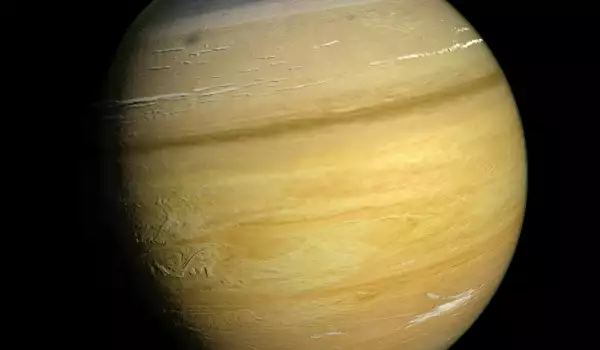Saturn's moon Titan is a world half the size of Earth. The melting point there is so low that the methane pools on its surface and the volcanoes spew ice. Despite its inhospitable atmosphere, Saturn's moon Titan has several noteworthy similarities to our own planet.
Scientists who are part of the Cassini–Huygens mission to Saturn and its moons have publicized new photos that reveal enormous dunes of shifting sands, consisting of hydrocarbons, on the surface of Titan. These bear a striking resemblance to the desert dunes here on Earth.
In fact, scientists believe that the Saturn moon is so similar to our own planet that they are now using the Earth as a model to determine how Titan's climate has changed. Researchers say that the dunes covering up to 17% of Titan's surface suggest that the climate on Saturn's moon was significantly different in the past, in comparison to today's.
Scientists believe that these dunes could be the remnants of an ancient lake that has long since evaporated and formed the wind-shaped ridges. Prof. Philip Paley, cosmologist at the University of Bordeaux, and his colleagues have compared the pictures of hydrocarbon dunes with sand ones found in the Namib desert in Namibia and the Great Sand Sea in West Egypt.
Titan, with its diameter of 3201 mi (5151 kilometers), is the second largest natural satellite in the Solar System and is larger than the planet Mercury. Titan receives only 1% of the amount of light Earth does, meaning that the average temperature on its surface is -290°F (-180° C).
Its atmosphere is known to consist primarily of nitrogen and methane, while its surface is composed of frozen water which has turned into ice as hard as stone due to the freezing temperatures. Measurements by the Cassini–Huygens spacecraft have confirmed frequent rainfall of liquid methane and lakes of flammable hydrocarbon, which exists in a gas state on Earth, covering large areas around the poles.
Pictures of the equator sent back by Cassini reveal the vast dunes covering the regions known as Fensal - north of the equator and Aztlán - to the south. These latest discoveries indicate that they were covered with lakes of liquid methane in the past, in turn meaning that Titan's climate had changed drastically.
It's also postulated that Titan was once even colder, having warmed up in the past 100 million years, changing its climate to what it is today.









